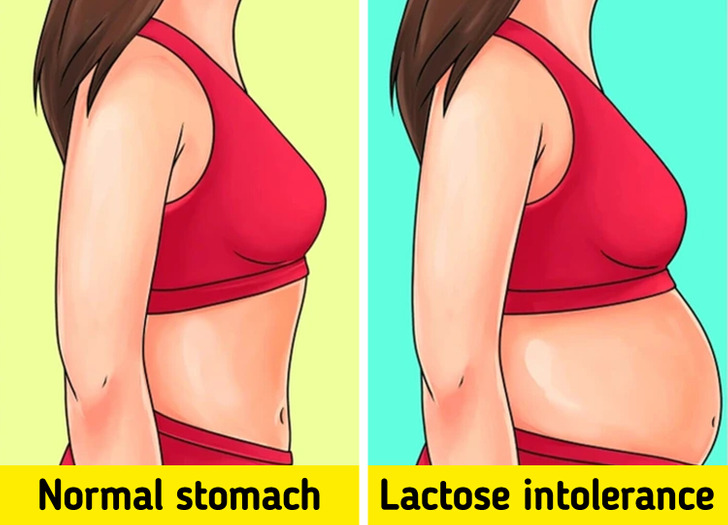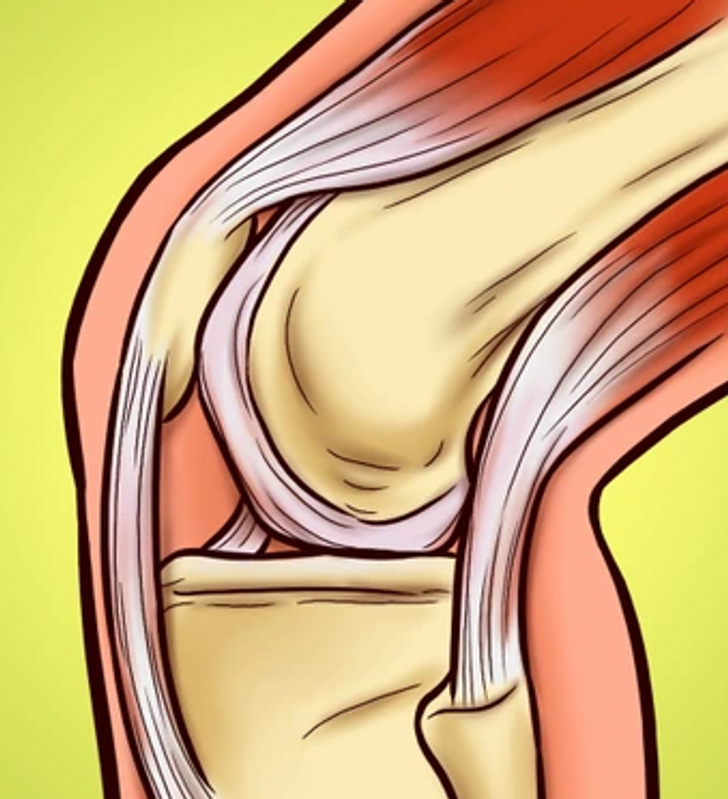8 Signs Your Body Might Be Telling You’re Lactose Intolerant / Bright Side
Lactose intolerance affects millions of people worldwide, often without them realizing it. In this article, we’ll explore 8 common ways your body might be trying to tell you that lactose intolerance could be the culprit behind your discomfort.
CONTENT IS PROVIDED FOR INFORMATIONAL PURPOSES ONLY AND IS NOT INTENDED AS A SUBSTITUTE OF MEDICAL ADVICE.
SEEK GUIDANCE OF YOUR DOCTOR REGARDING YOUR HEALTH AND MEDICAL CONDITIONS.
Mouth ulcers

It’s not as common, some people with lactose intolerance have also reported headaches, feeling tired, trouble focusing, muscle and joint pain, mouth ulcers, problems with urination, and even eczema.
Dairy products such as milk, cheese, and yogurt are often linked to the development of canker sores. Some experts believe that proteins found in cow’s milk may trigger mouth ulcers in certain individuals. These flare-ups could result from an adverse immune reaction to cow’s milk.
If you frequently experience mouth sores, consider eliminating dairy products, especially those made from animal milk, from your diet. Instead, try alternatives like soy milk, oat milk, and vegan cheese to see if these changes help reduce the occurrence of canker sores.
Swelling

Dairy allergies can cause reactions not only in your digestive system but also in other parts of your body, including the skin and lungs. Common symptoms include:
- Rash
- Hives
- Swelling, often around the lips and face
- Wheezing
- Tightness in the throat
- Trouble swallowing
In some cases, especially in babies, there may also be blood in the stool.
More severe symptoms, such as throat swelling and difficulty breathing, can indicate anaphylaxis—a serious and potentially life-threatening allergic reaction. Anaphylaxis usually starts within minutes of consuming an allergenic food, though it can sometimes occur hours later. If this happens, immediate treatment is critical. Administer an injection of epinephrine (if available) and seek emergency medical care without delay. If you don’t have epinephrine on hand, go to the nearest emergency room immediately.
Diarrhea or constipation

Lactose intolerance occurs when the body has difficulty breaking down lactose, the natural sugar found in milk. This can lead to digestive issues such as diarrhea after consuming dairy products. While the condition, also known as lactose malabsorption, is not typically harmful, it can cause significant discomfort.
Interestingly, lactose intolerance doesn’t always result in diarrhea. For some individuals, particularly those whose gut bacteria produce methane instead of hydrogen, constipation can be a prominent symptom. Research suggests that methane production in the digestive system slows down intestinal movement, leading to constipation in about one-third of those affected by lactose intolerance.
Bloating

Bloating is a frequent symptom of lactose intolerance in both children and adults. These issues arise when the body cannot properly digest lactose, the natural sugar found in dairy products. This occurs due to a deficiency of lactase, the enzyme responsible for breaking lactose into simpler sugars for absorption.
When lactose remains undigested in the gut, it travels to the colon, where it is fermented by bacteria.
Headache and fatigue

Lactose intolerance can sometimes present with symptoms that extend beyond digestive discomfort. These symptoms may include back pain, headaches, fatigue, general tiredness, and difficulty concentrating. Additionally, some individuals report experiencing sleep disturbances, dizziness, and a sense of overall malaise.
These less common symptoms are believed to result from the body’s inability to effectively process lactose, which can trigger inflammatory or metabolic responses in sensitive individuals.
Flatulence

When lactose is not properly digested in the small intestine, it passes into the colon, where it is broken down by gut bacteria.
This fermentation process produces acids and gases, such as hydrogen, methane, and carbon dioxide. These byproducts are responsible for the symptoms of lactose intolerance, including flatulence.
Muscle and joint pain

Muscle and joint pain can sometimes be linked to lactose, the sugar found in dairy products. Normally, lactose is broken down by lactase, an enzyme produced in the small intestine. However, most of the world’s population loses the ability—or has a significantly reduced ability—to digest lactose after infancy, as lactase production declines in adulthood.
Why does this matter? Even for those who can digest lactose, it is quickly converted into glucose, which may disrupt the gut microbiome, raise blood sugar levels, and trigger systemic inflammation. Whether it’s due to poor digestion or the metabolic impact of lactose, the result often leads to inflammation and pain—something we all strive to avoid.
Abdominal pain and cramps

The most common symptoms of lactose intolerance include abdominal cramps and pain, often occurring within a few hours after consuming dairy products.
Furthermore, if you’re experiencing symptoms of lactose intolerance, it could be helpful to explore whether gluten intolerance might also be a contributing factor.
12 Ways Your Body May Be Telling You That You Have Gluten Sensitivity


